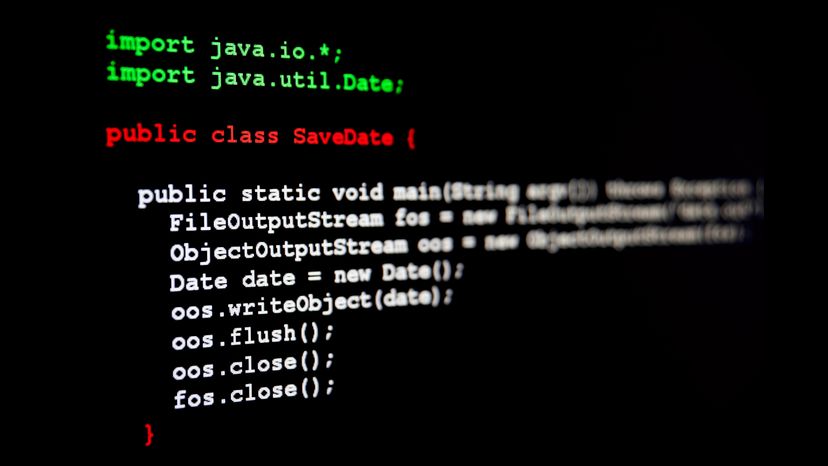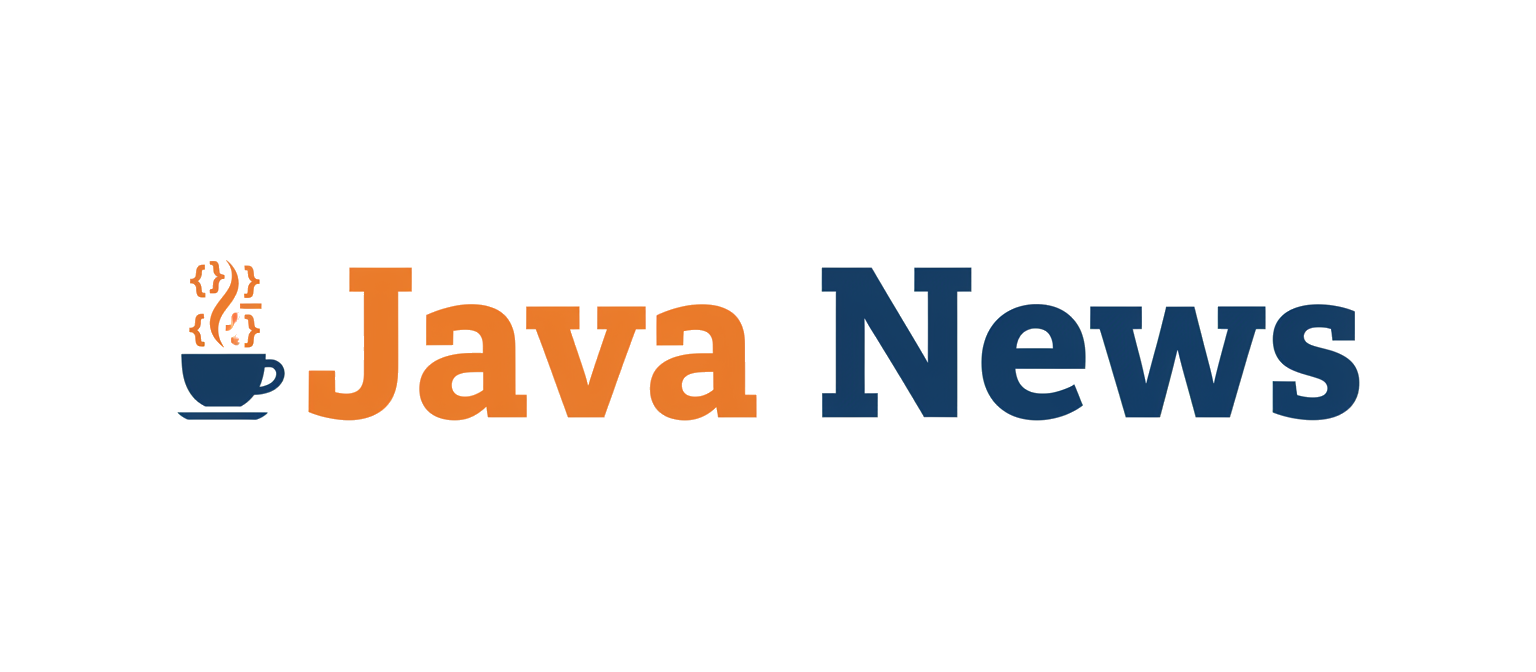The Java ecosystem is in a perpetual state of vibrant evolution, and nowhere is this more apparent than in the enterprise space. For years, developers have witnessed the steady, deliberate march from Java EE to the community-driven stewardship of the Eclipse Foundation’s Jakarta EE. Today, we stand at a significant inflection point. The recent finalization of all 16 Jakarta EE 11 specifications marks a watershed moment, solidifying the platform’s role as a modern, cloud-native powerhouse. This isn’t just an incremental update; it’s a fundamental alignment with the latest advancements in the core Java platform, particularly Java SE 17 and the revolutionary concurrency models introduced by Project Loom.
This wave of innovation, a key highlight in recent Java EE news, is being rapidly embraced by leading runtimes like Payara and Open Liberty. Simultaneously, frameworks like Quarkus and Micronaut continue to push the boundaries of performance and developer experience, often leveraging the very same Jakarta EE APIs. This article delves into the technical details of this enterprise Java renaissance. We will explore the core concepts of Jakarta EE 11, demonstrate its features with practical code examples, and discuss how it integrates with game-changing JVM features like virtual threads. We’ll also cover best practices for migration and optimization, ensuring you have the knowledge to navigate this exciting new landscape.
The Dawn of a New Era: Understanding Jakarta EE 11
Jakarta EE 11 represents the most significant evolution of the platform since its transition from Java EE. It’s not merely a collection of updated libraries; it’s a strategic realignment with the modern Java development paradigm, focusing on developer productivity, cloud-native architecture, and performance.
From javax to jakarta: The Foundation for the Future
The journey began with the pivotal namespace change from javax.* to jakarta.* in Jakarta EE 9. While seemingly a simple find-and-replace operation, this move was technically and symbolically profound. It liberated the platform from its historical constraints, empowering the community to innovate freely. Jakarta EE 11 builds directly on this foundation, making the jakarta.* namespace the undisputed standard for enterprise applications. Any discussion of current Jakarta EE news must acknowledge this foundational shift, which has enabled all subsequent progress.
Core Themes of Jakarta EE 11: Java 17 and Modern Concurrency
Two major themes define the Jakarta EE 11 release. First and foremost is the official baseline requirement of Java SE 17. This move allows the specifications to leverage modern language features like records, text blocks, and pattern matching, leading to more concise and expressive code. This is welcome Java 17 news for enterprise developers looking to modernize their codebase.
Second is the deep integration with modern concurrency models. The updated Jakarta Concurrency 3.1 specification now formally embraces the structured concurrency features made popular by Project Loom and standardized in recent Java releases. This alignment is critical for building highly scalable, resilient applications that can take full advantage of virtual threads, a topic we’ll explore in depth later.
Code in Action: The New Jakarta Data 1.0 Specification
One of the most exciting additions is the brand-new Jakarta Data 1.0 specification. It aims to standardize the popular repository pattern, drastically reducing boilerplate code for common database operations. Instead of manually writing JPA Query Language (JPQL) for simple finders, developers can now define methods in an interface, and the compliant runtime will provide the implementation. This is fantastic Hibernate news for users of the popular JPA implementation, as it simplifies the data access layer significantly.

Consider this example of a repository for a Product entity:
package com.example.shop.repository;
import com.example.shop.model.Product;
import jakarta.data.repository.CrudRepository;
import jakarta.data.repository.Find;
import jakarta.data.repository.Query;
import jakarta.data.repository.Repository;
import java.util.stream.Stream;
/**
* A repository interface demonstrating Jakarta Data 1.0 features.
* The implementation is automatically provided by the runtime.
*/
@Repository
public interface ProductRepository extends CrudRepository<Product, Long> {
/**
* Finds products by category, ordered by name.
* The query is derived from the method name.
*/
Stream<Product> findByCategoryOrderByNameAsc(String category);
/**
* A custom JPQL query using the @Query annotation.
* This provides an escape hatch for complex queries.
*/
@Query("SELECT p FROM Product p WHERE p.price > ?1 AND p.inStock = true")
Stream<Product> findAvailableProductsCheaperThan(double maxPrice);
/**
* A simple finder method to retrieve a product by its unique SKU.
*/
@Find
Product findBySku(String sku);
}This interface is clean, declarative, and highly readable. The runtime, powered by a provider like Hibernate or EclipseLink, inspects the method signatures and annotations to generate the necessary database queries at build time or runtime.
Modern Runtimes: Where Jakarta EE 11 Comes to Life
Specifications are only as powerful as their implementations. The real-world impact of Jakarta EE 11 is realized through application servers and runtimes that provide certified, production-ready environments. The latest JVM news and runtime updates show a clear trend towards rapid adoption.
Payara, Open Liberty, and the Race to Compliance
Runtimes like the Payara Platform and Open Liberty are at the forefront of this movement. They offer developers early access to new features, often providing beta support for specifications even before they are finalized. Their focus on performance, modularity, and cloud-native features like containerization and observability makes them ideal platforms for building next-generation enterprise applications. Keeping an eye on their release notes is a great way to follow the latest Java performance news and Java security news as they implement these new standards.
Practical Example: A Modern Jakarta REST Endpoint
Let’s see how these pieces come together in a practical example. Below is a simple JAX-RS (Jakarta RESTful Web Services) endpoint that uses Contexts and Dependency Injection (CDI) and leverages a Java 17 record for the data transfer object (DTO). This code is clean, modern, and relies entirely on standard Jakarta EE 11 APIs.
package com.example.shop.api;
import com.example.shop.model.Product;
import com.example.shop.repository.ProductRepository;
import jakarta.enterprise.context.ApplicationScoped;
import jakarta.inject.Inject;
import jakarta.ws.rs.*;
import jakarta.ws.rs.core.MediaType;
import jakarta.ws.rs.core.Response;
import java.util.List;
import java.util.stream.Collectors;
@Path("/products")
@ApplicationScoped
@Produces(MediaType.APPLICATION_JSON)
@Consumes(MediaType.APPLICATION_JSON)
public class ProductResource {
// Using a Java 17 Record for a concise DTO
public record ProductDTO(String sku, String name, double price) {}
@Inject
private ProductRepository productRepository;
@GET
@Path("/category/{name}")
public Response getProductsByCategory(@PathParam("name") String categoryName) {
// Using the Java Stream API for transformation
List<ProductDTO> products = productRepository.findByCategoryOrderByNameAsc(categoryName)
.map(p -> new ProductDTO(p.getSku(), p.getName(), p.getPrice()))
.collect(Collectors.toList());
if (products.isEmpty()) {
return Response.status(Response.Status.NOT_FOUND)
.entity("{\"error\":\"No products found for category: " + categoryName + "\"}")
.build();
}
return Response.ok(products).build();
}
@POST
public Response createProduct(ProductDTO productDTO) {
Product newProduct = new Product();
newProduct.setSku(productDTO.sku());
newProduct.setName(productDTO.name());
newProduct.setPrice(productDTO.price());
Product savedProduct = productRepository.save(newProduct);
return Response.status(Response.Status.CREATED).entity(savedProduct).build();
}
}This class demonstrates the seamless integration of Jakarta REST, CDI, and Jakarta Data. The code is declarative and focuses on business logic, leaving the heavyweight lifting to the underlying application server.
Beyond the Core: The Influence of Project Loom and Cloud-Native Frameworks
The innovation isn’t confined to the Jakarta EE specifications alone. The entire Java ecosystem is benefiting from groundbreaking advancements in the JVM, most notably Project Loom. The latest Java 21 news has been dominated by the production-ready release of virtual threads, and Jakarta EE 11 is perfectly positioned to capitalize on it.
Project Loom and Virtual Threads: A Paradigm Shift for Concurrency

Virtual threads are lightweight threads managed by the JVM, not the operating system. This allows for the creation of millions of virtual threads on a single machine, making the traditional thread-per-request model viable even for massively scalable services. This is revolutionary Java concurrency news. Jakarta Concurrency 3.1 directly supports this with its integration of Structured Concurrency, which provides a robust and observable way to manage tasks running in different threads.
Here’s how you might use a Jakarta `ManagedExecutorService` with a `StructuredTaskScope` to perform two parallel, independent lookups—a common pattern in microservices.
package com.example.shop.service;
import jakarta.annotation.Resource;
import jakarta.enterprise.concurrent.ManagedExecutorService;
import jakarta.enterprise.context.ApplicationScoped;
import java.util.concurrent.Future;
import java.util.concurrent.StructuredTaskScope;
@ApplicationScoped
public class ProductEnrichmentService {
// A container-managed thread pool, which can be configured to use virtual threads
@Resource
private ManagedExecutorService executor;
// A record to hold the combined result
public record EnrichedProductData(String inventoryStatus, String supplierInfo) {}
public EnrichedProductData fetchEnrichedData(String sku) throws Exception {
// Use try-with-resources for automatic scope shutdown
try (var scope = new StructuredTaskScope.ShutdownOnFailure()) {
// Fork two concurrent tasks. The executor will run these on virtual threads if configured.
Future<String> inventoryFuture = scope.fork(() -> fetchInventoryStatus(sku));
Future<String> supplierFuture = scope.fork(() -> fetchSupplierInfo(sku));
// Wait for both tasks to complete; throws if any task fails
scope.join();
scope.throwIfFailed();
// Combine the results once both are successfully completed
return new EnrichedProductData(inventoryFuture.resultNow(), supplierFuture.resultNow());
}
}
// Dummy methods representing remote service calls
private String fetchInventoryStatus(String sku) throws InterruptedException {
Thread.sleep(200); // Simulate network latency
return "In Stock";
}
private String fetchSupplierInfo(String sku) throws InterruptedException {
Thread.sleep(300); // Simulate network latency
return "Supplier-ABC";
}
}This code is significantly simpler and more robust than traditional approaches using `CompletableFuture` or manual thread management. This is the kind of powerful synergy that the latest Project Loom news and Jakarta EE updates are bringing to developers.
Best Practices for Navigating the Modern Java Landscape
Adopting these new technologies requires a strategic approach. Whether you are migrating an existing application or starting a new project, following best practices is key to success.
Migration Strategies and Build Tooling
For those migrating from older Java EE or Jakarta EE versions, the first step is updating your build configuration. The latest Maven news and Gradle news highlight improved support for the Jakarta EE 11 artifacts. Your primary tasks will be:
- Update the Jakarta EE API dependencies to version 11.
- Ensure your project is configured to build and run with a Java 17 or newer JDK.
- If coming from `javax.*`, use the Eclipse Transformer tool to automate the namespace conversion.
- Thoroughly test your application using modern frameworks like JUnit 5 and Mockito to catch any behavioral changes or regressions. Good test coverage is non-negotiable.

Performance, Security, and the Evolving Ecosystem
The move to Jakarta EE 11 and modern JVMs like those from Adoptium, Azul, or Amazon Corretto necessitates a fresh look at performance tuning. The introduction of virtual threads changes the calculus for thread pool sizing and I/O handling. It’s crucial to stay updated on OpenJDK news and your chosen runtime’s documentation for the latest tuning guidance. Security remains paramount; always run on the latest patched versions of your JVM and application server.
Furthermore, the Java ecosystem continues to expand. While this article focuses on enterprise Java, the broader landscape includes vibrant communities around JavaFX news for desktop UIs and even specialized areas like Java Card news for embedded systems. Excitingly, Java is also becoming a first-class citizen in the world of artificial intelligence. The latest Spring AI news and the emergence of libraries like LangChain4j show that Java developers can now easily integrate large language models (LLMs) into their applications, opening up a new frontier for innovation.
Conclusion: The Bright Future of Enterprise Java
The finalization of Jakarta EE 11 is not just an update; it’s a declaration that enterprise Java is more relevant, powerful, and modern than ever. By embracing Java 17, integrating seamlessly with Project Loom’s virtual threads, and simplifying data access with Jakarta Data, the platform provides a robust and productive environment for building the next generation of scalable, cloud-native applications. The rapid adoption by runtimes and the parallel innovation from frameworks like Quarkus and Micronaut paint a clear picture: the Java ecosystem news is overwhelmingly positive.
For developers, the path forward is clear. It’s time to explore the new specifications, experiment with structured concurrency, and begin planning your migration to this modern platform. The tools and standards are in place, and the future of enterprise Java is bright, performant, and ready for the challenges of tomorrow.

